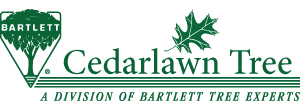Tips for Identifying Pine trees – Part III
In part 2 of our Tree Identification blog we talked about how to distinguish between some of the more common groups of coniferous trees here in the Northeast. We will expand upon that in today’s blog and will discuss how to distinguish between some of the more common pine trees here in the Northeast.
Once you have determined that a tree is a type of pine first look at the size of the cones. Let’s break cone size into 2 groups: 1) large-over four inches long or 2) small-around three inches or less in length. If the cones are over 4” in length it is highly probable it is an eastern white pine (Pinus strobus). There will be 5 needles per fascicle and the needles will be over 3” long, and be thin & flexible. If the cones are less than 4” long it is probably a red, Austrian, Scotch, pitch or
step. How many needles are grouped together (either 2’s, 3’s or 5’s) in a bundle (fascicle)? Almost all pine species here in the Northeast will have either 2 or 5 needles per fascicle. If the tree has mostly 3 needles per fascicle it is probably a pitch pine. The tree trunk will also have areas with tufts of needles emerging from it.
Bark characteristics can also be useful, especially in some cases, in distinguishing pine species. Does the tree trunk have a predominantly orangish color? If bark is thin and flaky it is probably a Scotch (Scots) pine (Pinus sylvestris). Needles will be less than 3” long, stiff and twisted. If the tree trunk is showing some reddish-orange color low on the trunk between distinct bark ridges and the needles are long (over 4”) and break cleanly when bent it is probably a red pine.
Austrian pines (Pinus nigra) are probably the second most widely planted pine in landscapes in the Northeast. This alone should be useful for tree ID. If you have gone through the list above and not identified your tree there is a very good chance it is an Austrian pine.
when bent.
Diseases characteristic of certain tree species can sometimes aid in tree ID. Older Austriuan pines often show symptoms of pine tip blight (dead branch tips with dead, stunted needles).
While you may encounter other pine species such as Korean, limber, Japanese white, Japanese red or Swiss Stone pine, the list above is quite useful in most cases. Check the characteristics associated with the species listed in the previous sentence if you have progressed through the list and you still have not identified your pine. Also, identification of younger trees can be difficult since traits such a form, bark color and cones may not be present to aid your identification.










